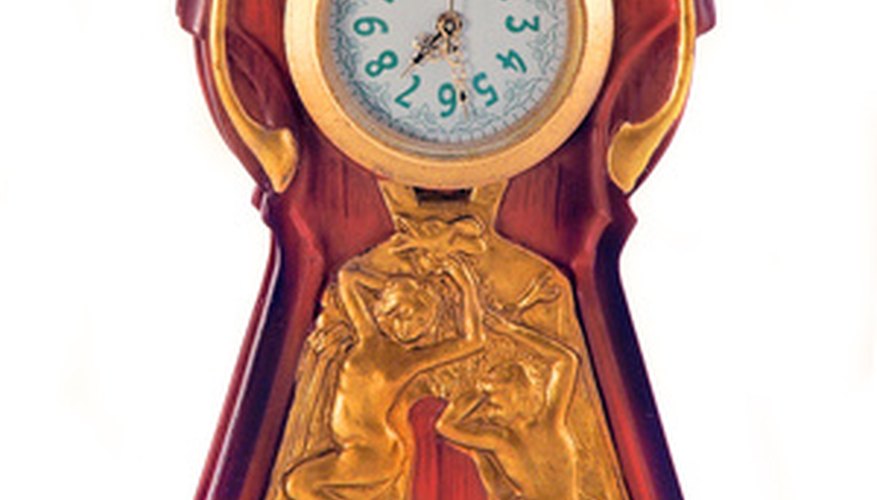Over-winding a clock is impossible unless the clock is an antique from the 1600s to 1700s, when the mechanics of the clock were weight-oriented and the pulleys and ropes inside would get tangled together. Even though clock owners still use the term "overwound," the problem is more likely that the clock requires a good cleaning and a few basic adjustments. A mechanically-driven clock wears down from day-to-day running, producing minuscule metal filings in the gears. Eventually, the coils and springs begin to stick.
- Over-winding a clock is impossible unless the clock is an antique from the 1600s to 1700s, when the mechanics of the clock were weight-oriented and the pulleys and ropes inside would get tangled together.
- Even though clock owners still use the term "overwound," the problem is more likely that the clock requires a good cleaning and a few basic adjustments.
Remove the pendulum if the clock has one before moving it from the wall or shelf. Leaving the pendulum attached while transporting the clock, even over a short distance, can result in having to replace the suspension spring.
Unfasten the clock hands by holding the minute hand and turning the nut to the left. Both hands will now be removable.
Remove the screws that hold the movement housing in place. These are usually located toward the front or back of the clock case. Clips may also be present so unfasten those, too, taking care not to break the clips.
Open the movement case and under a bright lamp light and with the aid of a magnifying glass inspect the gears, cogs and springs for dust, dirt and dark oil build up. Oil, like in any mechanical device, becomes old, dry and dirty and needs to be removed and replaced. Gently clean and wipe away any debris using toothpicks or a clean, lint-free cotton cloth.
- Remove the screws that hold the movement housing in place.
- Open the movement case and under a bright lamp light and with the aid of a magnifying glass inspect the gears, cogs and springs for dust, dirt and dark oil build up.
Spray any areas with signs of lint or dust with a can of compressed air. Use only short bursts as longer bursts focus air on one area for too long, increasing the risk of excess moisture forming. To complete the cleaning process, apply small amounts of clock cleaning fluid with a bristle brush in places where you find heavier deposits of old oil. You can purchase clock cleaning fluid at most jewelery stores.
Apply new clock oil to the gears one drop at a time so as not to over lubricate any areas. Carefully replace the housing into the body of the clock, closing the back and reattaching the hands to the face. Apply a small drop of oil on the nut holding the hands to keep them from sticking.
TIP
If the clock's gear box gets damp, place it on a sunny window sill or desktop for 15 to 30 minutes to let it dry. If the clock is not working after cleaning, have a professional clock repair person check it for worn or broken parts.
WARNING
Be cautious of repair people who believe an ultrasonic cleaning will do a proper job. This will only clean the large pieces of the clock thoroughly. A full removal of the mechanical parts for cleaning will be needed.
